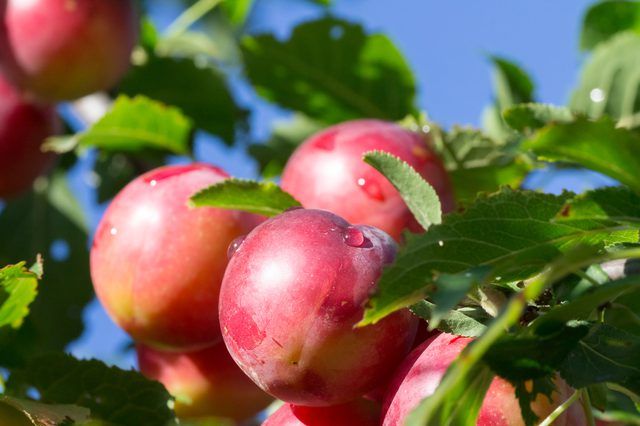Bulbs
Flower Basics
Flower Beds & Specialty Gardens
Flower Garden
Garden Furniture
Garden Gnomes
Garden Seeds
Garden Sheds
Garden Statues
Garden Tools & Supplies
Gardening Basics
Green & Organic
Groundcovers & Vines
Growing Annuals
Growing Basil
Growing Beans
Growing Berries
Growing Blueberries
Growing Cactus
Growing Corn
Growing Cotton
Growing Edibles
Growing Flowers
Growing Garlic
Growing Grapes
Growing Grass
Growing Herbs
Growing Jasmine
Growing Mint
Growing Mushrooms
Orchids
Growing Peanuts
Growing Perennials
Growing Plants
Growing Rosemary
Growing Roses
Growing Strawberries
Growing Sunflowers
Growing Thyme
Growing Tomatoes
Growing Tulips
Growing Vegetables
Herb Basics
Herb Garden
Indoor Growing
Landscaping Basics
Landscaping Patios
Landscaping Plants
Landscaping Shrubs
Landscaping Trees
Landscaping Walks & Pathways
Lawn Basics
Lawn Maintenance
Lawn Mowers
Lawn Ornaments
Lawn Planting
Lawn Tools
Outdoor Growing
Overall Landscape Planning
Pests, Weeds & Problems
Plant Basics
Rock Garden
Rose Garden
Shrubs
Soil
Specialty Gardens
Trees
Vegetable Garden
Yard Maintenance
Types of Trees Producing Stone Fruits
Stone fruits are those fruits with stony pits at their center. They include closely related fruits such as apricots, cherries, peaches, plums and nectarines.

Botanists refer to stone fruits as drupes -- a fruit type distinguished by a protective, stonelike seed covering at its center. When non-botanists talk about stone fruits, though, they're more likely to call them jams, jellies and pies. Several kinds of trees, all closely related members of the Prunus genus and spanning U.S. Department of Agriculture plant hardiness zones 4 through 9, are the main types of stone fruits:
Apricots
Known for their small, golden-orange fruits with slightly fuzzy skin, apricot tree cultivars (Prunus armeniaca cvs., USDA zones 4 through 9) bloom in spring with fragrant white blossoms that draw clouds of insect pollinators. Because apricots flower relatively early in the growing season, their blossoms can be vulnerable to cold damage from spring frosts. When grown in the cooler reaches of their hardiness zones, apricot trees need protected locations away from low-lying areas, or else their fruiting can be unreliable.
Tip
Pick apricot fruits when they are fully ripe, and enjoy them soon. Their flavor diminishes quickly after harvest.
Cherries
Sour cherry (Prunus cerasus, USDA zones 4 through 6), also known as pie cherry, is among the hardiest stone fruit trees. Sweet cherry (Prunus avium, USDA 5 through 9) is less cold-hardy but puts homegrown cherries within reach for gardeners in warm climates, particularly in the U.S. Pacific Northwest. The fruits of some cherry varieties tend to crack from excessive rainfall or irrigation; consistent soil moisture is essential to good crops.
Tip
Use fresh cherry fruits within a few days of their harvest. Among the dark cherry fruits, those with reddish-brown skin can be especially flavorful.
Nectarines
Nectarine fruits look like peach fruits without fuzz, and with good reason: They are from the same tree species and are very similar in all but their skin. Nectarine tree cultivars (Prunus persica var. nectarina cvs., USDA zones 5 through 8) bear pink spring blossoms that are notably dense and showy, but the buds and flowers are often lost to frost in cool regions. Nectarine trees are very susceptible to brown rot, a fungal disease that affects stone fruits. Remove all remaining dried, mummified fruits on the trees' branches and on the ground at the end of each growing season to reduce the overwintering of the disease.
Tip
Nectarine and peach fruits will ripen well off the trees, but pick them when they are fully ripe for their best flavor. Eat or process the ripe fruits immediately.
Peaches
Like their sibling, the nectarine, peach tree cultivars (Prunus persica cvs., USDA zones 4 through 9) can be vulnerable to spring frosts. Most varieties do best in USDA zones 5 through 8, but some cold-hardy and heat-tolerant cultivars stretch the limits on both ends. Cold-hardy, late-blooming varieties circumvent spring cold damage by blooming after the threat of frost has passed. Plant peach trees away from low-lying spots so that cold air drains down and away from their tender buds, blossoms and developing fruits.
Tip
Unripe peach fruits usually ripen well at room temperature, but they lose their flavor quickly once ripe. Keep the ripe fruits away from warm locations, and use them as soon as possible.
Plums
Many plum trees (Prunus spp., USDA zones 3 through 9) with edible fruits are crosses between European plum (Prunus domestica and Prunus communis, USDA zones 4 through 9), Japanese plum (Prunus salicina, USDA zones 5 through 8) and American plum (Prunus americana, USDA 3 through 8). The resulting cultivars are among the hardiest stone fruit trees. Even so, give plum trees protected, elevated sites so their buds and early blooms stay less vulnerable to cold temperatures and winds.
Tip
Healthy, ripe plum fruits have a dull, light yellowish green, bluish white or bluish gray, waxlike or powderlike coating. Harvest the fruits when they are firm, and let them ripen and soften at room temperature, or let them ripen fully on the tree branches and then use them immediately.